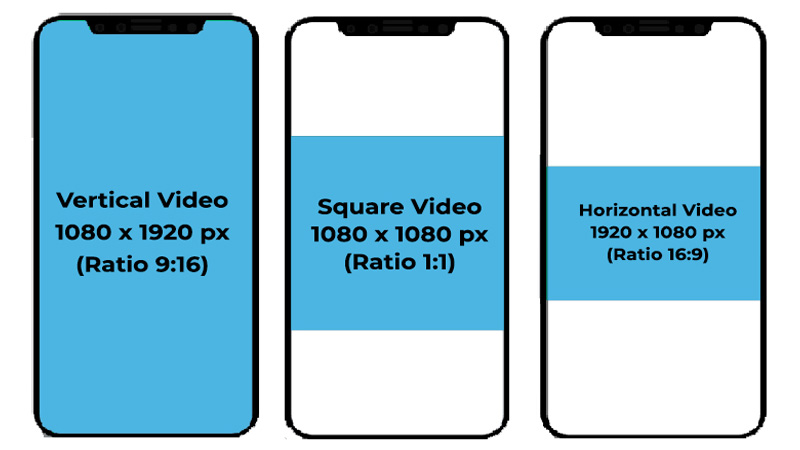Your HD television, laptop, smartphone, and digital camera all provide a different manner of what is known as an aspect ratio. It is essentially the proportion of the screen’s height (any screen) with its total width.
We’re going to investigate what display aspect ratio is, its types, and the best aspect ratios to use in multiple formats when it comes to content creation.
1. What is the Display Aspect Ratio?
One of the most fundamental elements of visual media is the aspect ratio. Based on how big or small your device’s screen is, it will have an automatic and adjustable aspect ratio, providing you with an adequate height and width of the image or video you are viewing.
The aspect ratio is also a key component to compare different types of heights and widths within a single device – more commonly, an HD TV.
For instance, when you talk about widescreen television, most of them always come with a 16:9 aspect ratio. This means that the width of each pixel is 16 units while the height of each pixel is 9 units.
The aspect ratio is also a very important element when it comes to projecting an image or a video display – determining whether the content appears square or rectangular. It plays an important role in the way smartphones, laptops, and other devices display content.
2. Aspect Ratio Historical Evolution
The concept of the aspect ratio was introduced back in the late 50s, and it was a somewhat complicated concept. While modern widescreen TVs have an automatic aspect ratio display of 16:9, a few decades ago, this wasn’t the case.
Because older television sets had smaller screens, they provided a standard aspect ratio of 4:3. This ratio was essentially considered the best way to view movies and shows. It was also designed in line with the standard field of vision for humans.
But thanks to soaring advancement in technical innovation, modern TVs, due to their complex mechanisms and widescreen design, engineers thought of testing new types of aspect ratios for better performance and viewing experience.
It is also important to know that the 16:9 aspect ratio was introduced in the late 80s, popularizing it as a better and more enjoyable way to view movies and other types of visual content, providing a more in-depth and immersive experience.
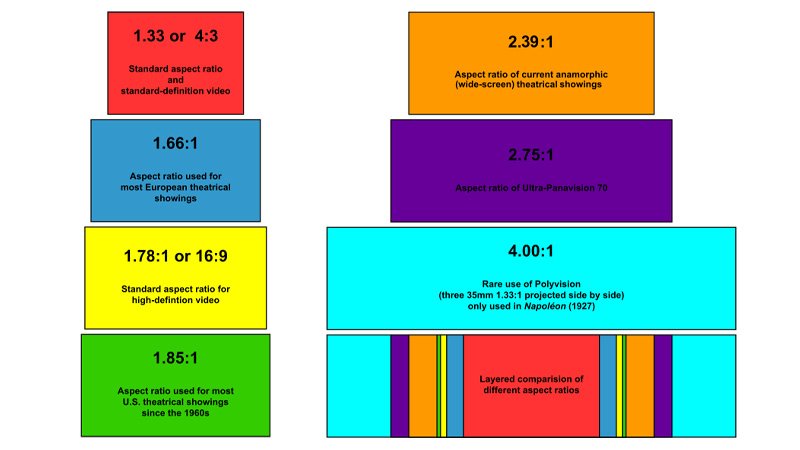
3. How Many Types of Aspect Ratio Formats?
Knowing different types of aspect ratio formats can allow video content creators to produce content with more streamlined quality in terms of setting the right framings, composition, etc. Let’s look into how many types of formats you can work with.
Widescreen viewing (16:9 ratio)
An aspect ratio of 16:9 is a very common one in today’s widescreen TVs and other types of digital media. This is mainly a rectangular angle of view in both TVs, laptops, and computer screens. This aspect ratio provides an immersive viewing experience with a wider field of view and panoramic vision.
Vertical viewing (9:16 ratio)
A vertical aspect ratio of 9:16 is different from a 16:9 ratio in the sense that the screen is more vertical. It is taller than it is wide. This type of aspect ratio is, mainly what you see when watching videos on your smartphone.
Fullscreen viewing (4:3 ratio)
A 4:3 aspect ratio is more typically used in obsolete TV sets and VHS videos. It provides a generally squarish viewing perspective with a width of 4 units and a height of 3 units. It is by no means a wide angle.
How to Calculate Aspect Ratio
Calculating your TV or any other screen’s aspect ratio is simple. Let’s, as an example, assume that your TV has a 16(W):9(H) aspect ratio. Using the formulae “screen ratio = width/height”, i.e. 16 divided by 9, which equals 1.78.
Common Aspect Ratios Formats
While there are numerous types of aspect ratios, two of the most common types used for viewing pleasure and content creation are 16:9 and 9:16. Both types can have different and more pronounced composition effects based on the type of video you are viewing or producing.
Examples for each aspect ratio
One of the typically used aspect ratios for a variety of modern widescreen, HD TV sets, and computer screens is 16:9.
It can be used for multiple applications, such as creating presentation slides, movies, and much more, with a respective rate of 1920x1080p and 1280x720p. Plus, this type of aspect ratio is also great for gaming and watching shows and movies.
On the other hand, the 9:16 aspect ratio is more typically used in smartphones and is great for viewing social media stories, producing social media content, etc., on smartphone and tablet screens.
It is a common aspect ratio used by content creators on TikTok, Facebook, and Instagram, with a pixel dimension of 1080x1920p.
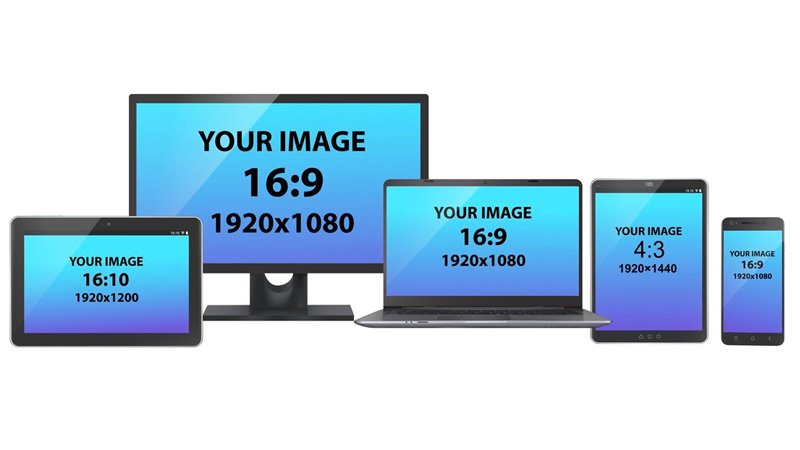
4. Concepts Closely Related to Aspect Ratio
4.1 Aspect Ratios vs pixel aspect ratio
While a display aspect ratio can be summed by calculating the actual height and width of a widescreen TV or any other screen by dividing the width of the screen by its height, the pixel aspect ratio is the actual height and width of each pixel within the display.
4.2 Aspect Ratios vs Image Sizes and Photograph Sizes
In a nutshell, the size of your image will also indicate how large or small it appears on a different screen or a webpage. With the aspect ratio of the image or photography determining its height and width, it will also indicate the type of shape it has (rectangular or square).
For instance, if the height and width of a standard digitally produced image is 1:1 (both sides are the same), the image will have a pixel dimension of 500x500p. Or it may have a pixel rate of 1500x1500p.
4.3 Aspect Ratios vs Video Resolutions and Video Size
It is important to understand that both the aspect ratio and video resolution (or size) share an important relationship, but they cannot be considered the same.
A video resolution is essentially the amount of pixels or individual colors that the video contains. It is typically represented with a width and height ratio such as 1920×1080 pixels, which is usually expressed as 1080p.
The aspect ratio is different from video resolution in the sense that while your HD TV might have a 16:9 aspect ratio, the video resolution may range from 1080p, 720p, or 2160p.
5. The Importance of Using High-Quality LED Display Products
When it comes to indoor or outdoor LED screening, the last thing you need to worry about is providing your audience with an immersive experience and top-notch resolution. This is where Ledsino comes into play.
We’re a premier company that offers rental and retail display products with a comprehensive category of some of the best LED screens and products in the world.
As a manufacturer and retailer, Ledsino develops seamless digital viewing solutions for both private and commercial events. One of our best products is the SA600-Series Indoor Display unit that comes with a hard connection with plug-and-play maintenance and a magnetic LED module.
The widescreen TV features a 3840Hz high refresh rate with high-quality resolutions ranging from 640*360 and 480*270 to 384*216 and 320*180.
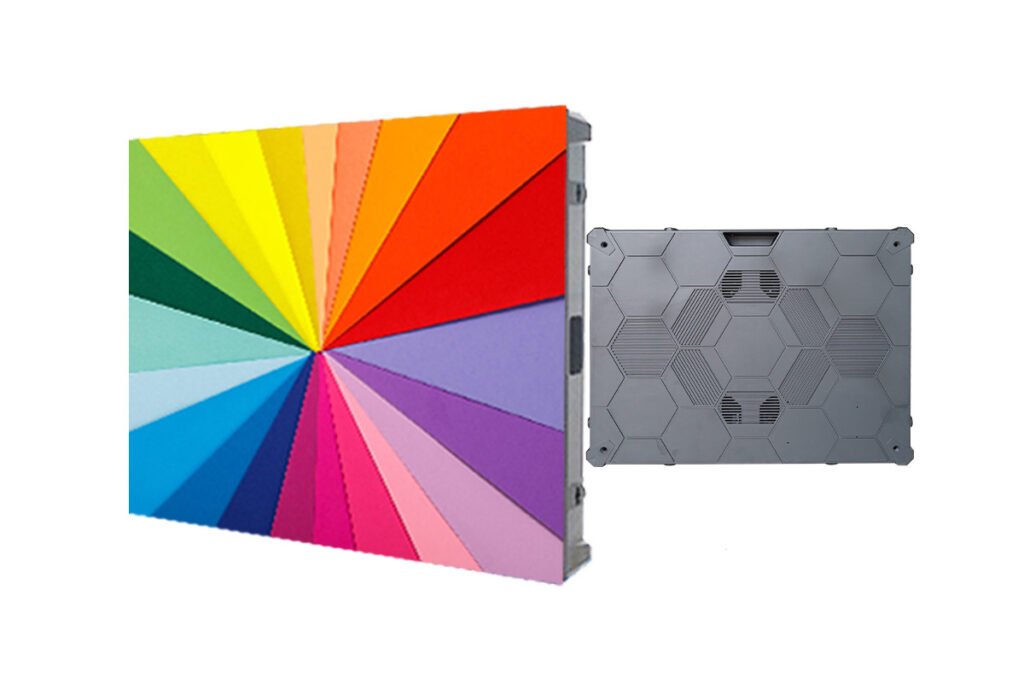
- Front-end Convenient Maintenance
- Cabinet Size: 480*320mm/3:2
- Ratio Compatible with 320*160mm Module
- With 3 Years Warranty and 5% Spare Parts
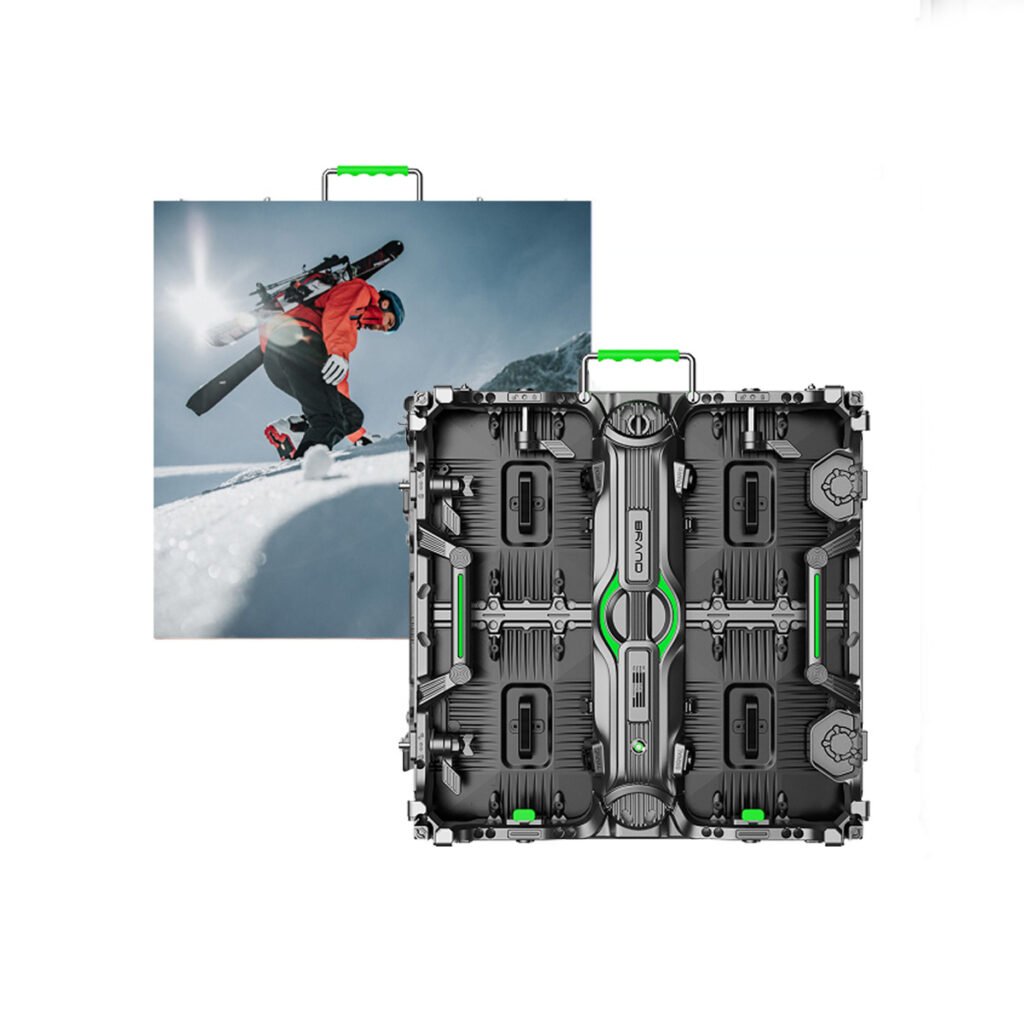
- Front Convenient Maintenance
- Cabinet Size: 500*500/1000mm
- Best Partner for Concert Jumbotron
- With 3 Years Warranty and 5% Spare Parts
6. How to Choose Aspect Ratios for Your Video Creation?
Selecting an appropriate aspect ratio for your video creation is of utmost importance if you want the results to be captivating and invigorating. However, what’s more important to understand is the best aspect ratio to use depending on the type of video you are creating.
For example, if you’re creating a YouTube video, 16:9 is going to be an optimal aspect ratio. Similarly, for making social media videos on platforms such as Instagram or Facebook, it is better to choose 1:1. When making videos on TikTok or Instagram via a smartphone, the best aspect ratio will be 9:16.
6.1 Aspect Ratios in Different Video Devices
Selecting the right aspect ratio for different types of videos on different platforms is going to vary in line with each platform’s guidelines. However, going with default aspect ratios can be a wise choice. But in light of this, we’ve mentioned adequate aspect ratios you choose depending on the platform you are using.
- For Facebook posts and stories, use 16:9 and 9:16, respectively.
- For Instagram feed and Instagram stories, use 4:5 and 16:9, respectively.
- For TikTok short-form videos and TikTok ads, use 9:16 and 16:9, respectively.
- For YouTube videos and YouTube shorts, use 16:9 and 9:16, respectively.

6.2 Aspect Ratios in Gaming and Filmmaking
One of the most best and commonly used aspect ratios in gaming is undoubtedly the 16:9 aspect ratio, as it offers a balance between performance and making the gameplay immersive. In addition, this aspect ratio is used across multiple broadcast TV products and is excellent for streaming movies, shows, and videos on platforms such as Netflix and YouTube.
On the other hand, for filmmaking, an optimal and certainly close to being the best aspect ratio is 1.33:1, as it is a deviation from the type of aspect ratio audiences are more used to, such as 1.77:1.
6.3 The Best Aspect Ratio for Video
Arguably one of the best aspect ratios for viewing and creating video content (depending on the platform) is 16:9. It is a standard aspect ratio across numerous digital devices and offers a wider and more immersive viewing experience.
7. Summing up the Aspect Ratio
In all, knowing what aspect ratio works for what type of video format and platform is a vital component of viewing and creating the best video content. What’s even great about it is the fact there is no learning curve to figuring out an optimal aspect ratio. All you need to know is what aspect ratio works best for your video.

